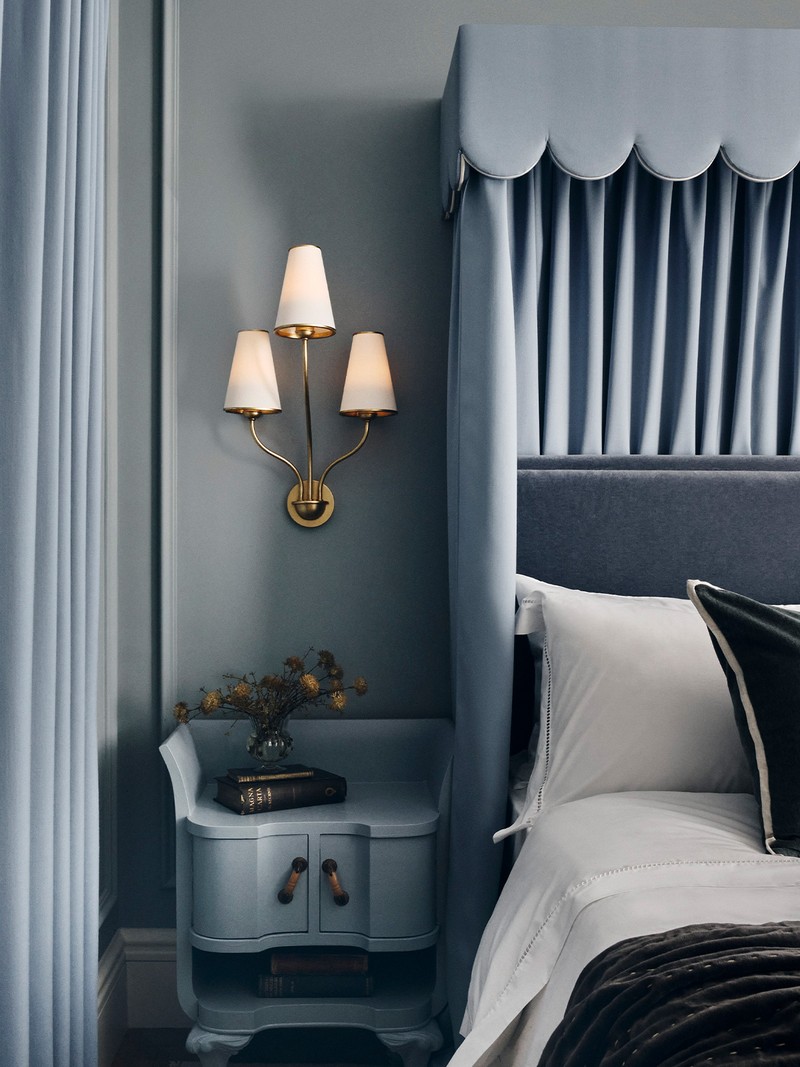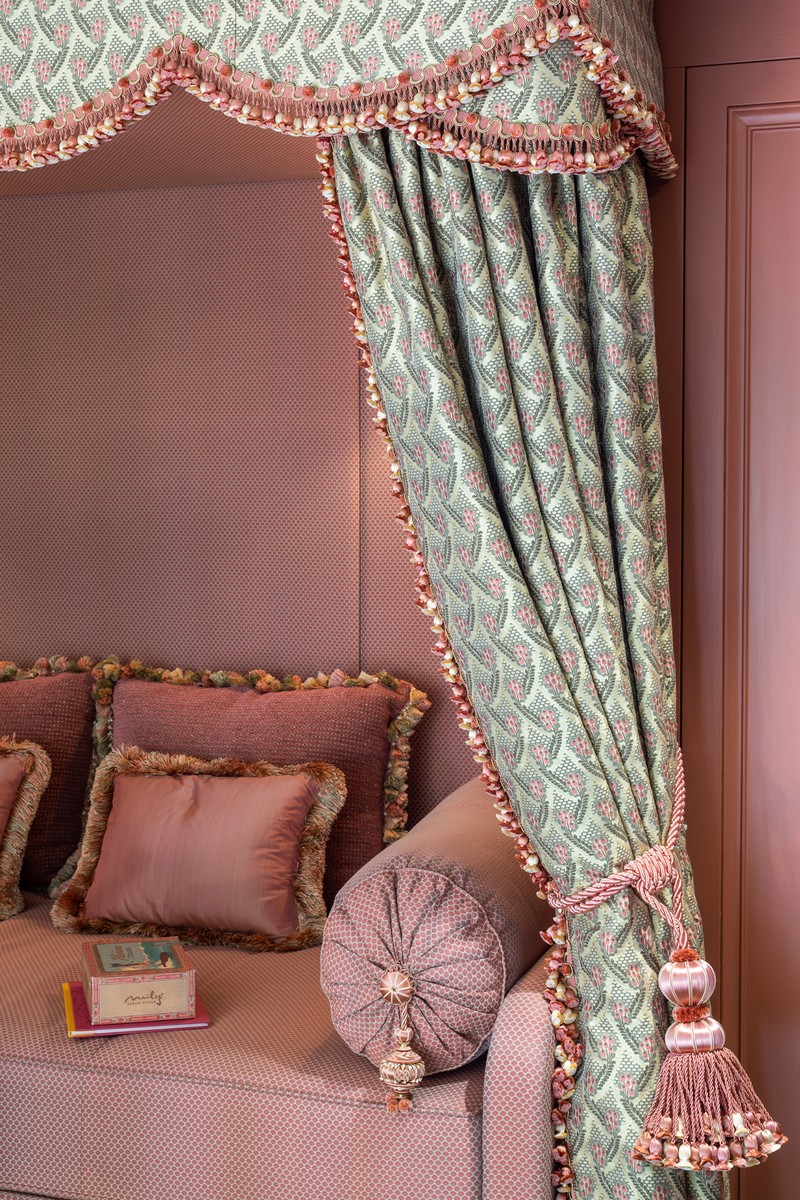The Interiors Revival Worth Knowing About
What is a pelmet?
“A pelmet is a framework placed above a window to conceal curtain fixtures. They’re a great way to disguise a window or door that is proportionally too far away from the ceiling” – Gaby Roads, senior interior designer at De Rosee Sa
“As well as decoratively concealing the curtain track, they can also provide extra insulation and block light.” – Jo Maudsley, Charlton Brown
Why do designers love pelmets?
“Pelmets fit within the trend of vintage-inspired, layered interiors that’s so huge right now. They can be an eye-catching feature. There’s also an undeniable comfort and nostalgia to their cosy and traditional appearance – they establish a feeling of enclosure and warmth. They’re a great opportunity to play with design and fabrics, by adding passementerie such as tassels, braids, gimps, cords and rosettes, but they’re also versatile enough that they can be designed to suit both modern and traditional interiors.” – Jo
How are they being used today?
“Pelmet shapes nowadays are much more contemporary, and often feature details such as scalloped edges and arches, which add a modern twist. There’s also the option to go oversized, so they don’t just conceal a pole but add height to a room as well." – Gaby
“If you want to respect traditional styling, pelmets should be made from the same fabric as the curtains. As both sides of the fabric are visible, both the curtains and pelmet need to be lined so you don’t see the back of the fabric. You can line it with either the same fabric, or a complementary fabric in a contrasting colour. Be aware that pelmets can sometimes shorten a room optically, so we have found that this trend works best in rooms with higher ceilings.” – Jo
Which fabrics work best?
"As a practice, we normally make pelmets in a matching fabric or in a neutral colour that picks up a similar tone in the curtains and then add a beautiful trim. A trim always adds that final detail and, if you’ve gone for a bespoke shape, it can be a nice way of framing the edge of the pelmet. Samuel & Sons has some amazing options, giving you the opportunity to play with layering different fabrics and colours." – Gaby
How do you stop pelmets feeling old fashioned?
“With modern adaptations and innovative designs, pelmets have evolved to complement various décor styles. Traditional interiors are coming back into fashion and features like pelmets are being modernised. If you’re able to get the perfect shape, fabric and trim, then a pelmet will only enhance the overall look of a room. If you use a contemporary fabric, that also stops it looking dated." – Gaby
Do you traditionally pair one with a blind? What’s the ideal window treatment?
“More clients are now requesting pelmet boxes on their curtains or roman blinds. You can pair a pelmet with a blind or a curtain, but you need to make sure you have the space above a window – ideally no less than 120mm." – Gaby
Finally, you can also use pelmets around a bed. What are the considerations here?
“When placed above a bed, the effect is ornamental, as the curtain is not built to run on its rails but is purely designed to adorn the head of a bed and provide an enclosed, cosy feeling. It gives you that canopy effect and evokes the feeling of a four-poster bed in a more decorative style. Above-bed pelmets add height and elegance, as well as a focal point for a room. Making the pelmet slightly shorter than the width of the bed allows the curtains to drape organically, resulting in a soft, feminine effect. Solid box pelmets are structured in shape and offer a more contemporary effect, whilst a soft pelmet is more relaxed, and tends to be adorned with trims and ruffles, creating a more opulent period look.” – Jo
Visit DeRoseeSa.com & CharltonBrown.com
DISCLAIMER: We endeavour to always credit the correct original source of every image we use. If you think a credit may be incorrect, please contact us at info@sheerluxe.com.


/https%3A%2F%2Fsw18.sheerluxe.com%2Fsites%2Fsheerluxe%2Ffiles%2Farticles%2F2024%2F02%2Fsl-how-to-use-pelmets-banda.png?itok=EIzcZ2I7)

